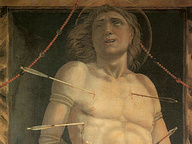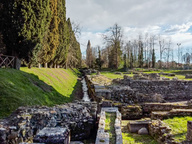Jakob Tuggener. FABRIK 1933–1953 / NUITS DE BAL 1934–1950
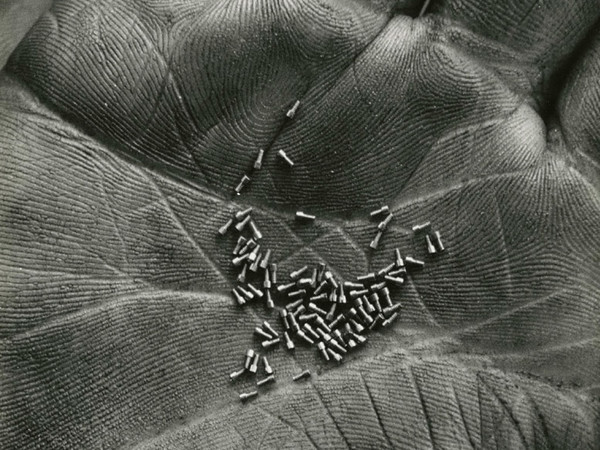
© Jakob Tuggener Foundation, Uster | Jakob Tuggener, Untitled, Tornos, Moutier, 1942
From 27 Gennaio 2016 to 17 Aprile 2016
Bologna
Place: Fondazione MAST
Address: via Speranza 42
Times: Tuesday to Sunday 10am-07pm
Responsibles: Martin Gasser, Urs Stahel
Organizers:
- Fondazione MAST
- In collaborazione con
- Fondazione Jakob Tuggener Uster
- Fondazione Svizzera per la fotografia Winterthur
Telefono per informazioni: +39 051 647 4345
E-Mail info: staff@fondazionemast.org
Official site: http://www.mast.org
MAST Foundation presents two exhibitions dedicated to the Swiss photographer Jakob Tuggener (1904–1988), whose work is being shown in Italy for the first time.
Jakob Tuggener show opens the 2016 exhibitions programme organized by the MAST Foundation, which promotes special photographic shows on the theme of industry and labour, employing both images from its own industrial photography collection and works from private collections or often previously unviewed archives.
“Jakob Tuggener is considered one of the ten most significant industrial photographers in the world,” stresses Urs Stahel, director of MAST’s PhotoGallery and co-curator of the exhibition. “His book FABRIK is an important milestone in the history of the photographic book, comparable with Brassaïs’s Paris de nuit (Paris by Night) (1933) and Bill Brandt’s The English at Home (1936).” “His signature is, on the one hand,” Stahel continues, “a penetrating, close-up view of people and objects in the world – so close and attentive that it seems as if he wants to startle them – and on the other hand, his skilful play with light and shadow.”
The exhibition FABRIK 1933–1953 presents, in the MAST PhotoGallery, over 150 original prints of Tuggener’s work, drawn both from his photographic book FABRIK – an essay unique in its kind, with a critical approach of great visual and human impact regarding the relationship between humans and machines – and from other photos by the artist dealing with work in his country.
“Jakob Tuggener (1904–1988) was simultaneously a photographer, a film-maker and a painter,” affirms Martin Gasser, co-curator of the show, “but he saw himself above all as an artist. Influenced by the German Expressionist films of the 1920s, he developed a poetic-artistic style that would become an inspiration for young photographers after the Second World War.
FABRIK was also the launch pad for Tuggener’s reputation as an outstanding photographic artist and led to many notable involvements in exhibitions such as Postwar European Photography (1953) and The Family of Man (1955) at the Museum of Modern Art in New York and the Prima mostra internazionale biennale di fotografia (First International Photography Biennale) in Venice (1957).” In FABRIK, Tuggener, besides tracing the history of industrialization, had the not always revealed intention to illustrate the destructive potential of indiscriminate technological progress. The outcome of this, in the author’s view, was the war in progress, for which the Swiss armaments industry was manufacturing goods undisturbed.
The NUITS DE BAL 1934–1950 slide shows on Level 0 present images of balls and other social events. Fascinated by the glittering atmosphere of high-society parties, Tuggener had begun to photograph elegant ladies and their silk gowns in Berlin, but it was in Zurich and St. Moritz that, wearing a dinner jacket and with his Leica, he captured the mysterious facets of the NUITS DE BAL. His lens also took in the “invisible labour” of musicians, waiters, cooks, valets and butlers, as they silently moved through the festive and self-referential world of the heedless guests. The latter opposed the publication of Tuggener’s dance-related material, as they wished to remain anonymous and not to be seen engaged in dancing entertainment.
“Above all, the contrast between the brilliantly lit ballroom and the dark factory hall influenced the perception of his artistic oeuvre,” Gasser explains. “Tuggener also positioned himself between these two extremes when he stated: ‘Silk and machines, that’s Tuggener’. In reality, he loved both: the wasteful luxury and the dirty work, the enchanting women and the sweaty labourers. For him, they were both of equal value and he resisted being categorized as a social critic who pitted one world against the other. On the contrary, these contrasts belonged to his conception of life and he relished experiencing the extremes – and the shades of tones in between – to the most intense degree.”
Besides the 150 factory photographs and the projection of his work on balls, MAST is also exhibiting a collection of book maquettes, which Tuggener himself used to make up by hand.
In addition, in order to represent the eclecticism and exceptional nature of this artist, the show has been enriched with SHORT FILMS distinguished by a dynamic directorial style and an editing technique that owes much to the theories of Eisenstein, with shifts from the long shot to the close-up:
PROJECTIONS – Continual
AERIAL MEETING, 1937, 6’
THE PULSE OF NEW TIMES, 1938, 12’
THE MILL ON THE LAKE, 1944, 5’
THE MACHINE ERA, 1938-70, 30’
SCARICA IL COMUNICATO IN PDF
COMMENTI

-
 Dal 20 dicembre 2024 al 04 maggio 2025
Fermo | Palazzo dei Priori
Dal 20 dicembre 2024 al 04 maggio 2025
Fermo | Palazzo dei Priori
-
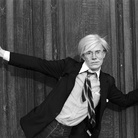 Dal 20 dicembre 2024 al 04 maggio 2024
Gorizia | Palazzo Attems Petzenstein
Dal 20 dicembre 2024 al 04 maggio 2024
Gorizia | Palazzo Attems Petzenstein
-
 Dal 18 dicembre 2024 al 18 dicembre 2024
Venezia | Museo Correr
Dal 18 dicembre 2024 al 18 dicembre 2024
Venezia | Museo Correr
-
 Dal 14 dicembre 2024 al 02 marzo 2025
Palermo | Palazzo Abatellis
Dal 14 dicembre 2024 al 02 marzo 2025
Palermo | Palazzo Abatellis
-
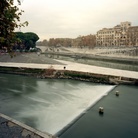 Dal 12 dicembre 2024 al 23 febbraio 2025
Roma | Palazzo Altemps
Dal 12 dicembre 2024 al 23 febbraio 2025
Roma | Palazzo Altemps
-
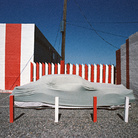 Dal 13 dicembre 2024 al 31 agosto 2025
Roma | Museo dell'Ara Pacis
Dal 13 dicembre 2024 al 31 agosto 2025
Roma | Museo dell'Ara Pacis

